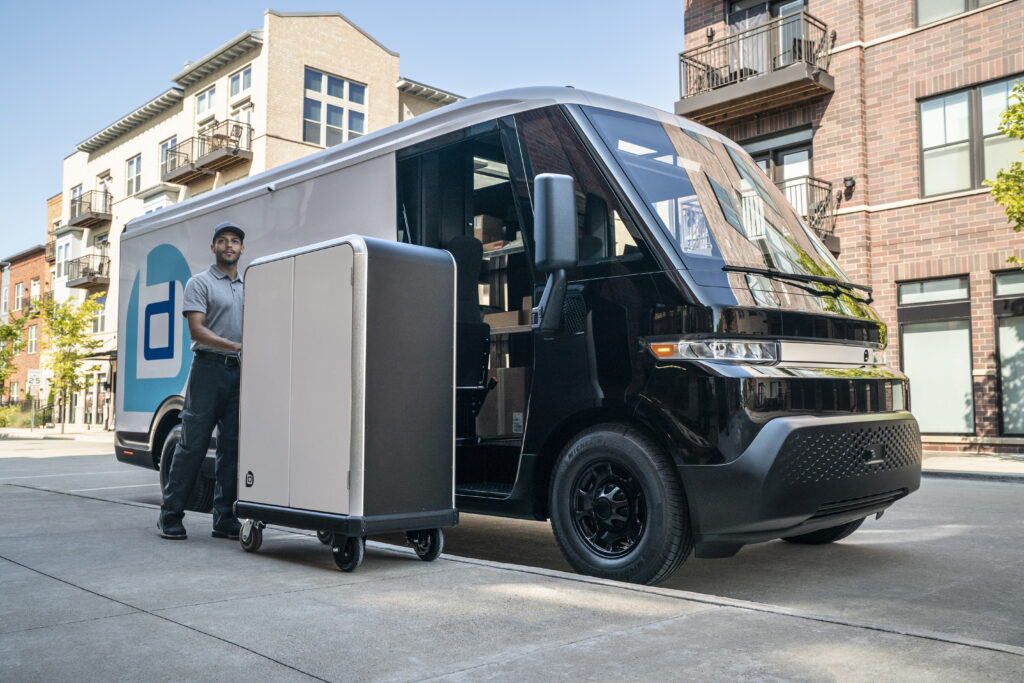Managing EV range means optimizing the way your vehicles are used and driven. Your efforts will have a significant impact on boosting range – even if you can’t control the temperature outdoors.
How to maximize a vehicle’s range
- Go easy on the accelerator
EV efficiency is highest at city driving speeds – any time spent cruising at over 110 km/h will reduce range. Accelerating too quickly will also cut into overall range, so drive smoothly. - Put your EVs on urban duty
City driving, with its stops and starts, maximizes the range of EVs. That’s because EVs use regenerative braking to recharge the battery, bit by bit. In an EV, when coasting or braking, the electric motor that drives the wheels reverses, returning power to the battery.

- Adopt one-pedal driving
‘One-pedal driving’ is a term used to describe letting the car come to a stop under the resistance of the electric motor to add range through regenerative braking. This gradual braking enhances safety and also reduces the burden on the driver of having to switch between the accelerator and brake pedals. Brake pedals in EVs usually only need to be applied for more sudden stops. Studies have found1 that using a one-pedal approach in city driving will add an average 5 per cent to the vehicle’s range — but the benefit can be much greater, too. - Pre-condition the cabin before leaving home base
Temperature control is another factor that affects range. Using the heat or air conditioning requires battery power that could otherwise be used by the electric motor. Drivers can precondition the cabin using the heating system or air conditioning while the vehicle is still plugged into its charger and then be ready to roll away in comfort. - Don’t exceed your EV’s optimal payload
Additional payload, including trailers, will reduce range. Roof racks, ladders and other external accessories also increase wind resistance, which impacts range when driving at highway speeds. - Respect top and bottom battery buffer
It’s important to remember that because an EV battery should not be discharged completely2, you’re never accessing a vehicle’s total range rating. Likewise, as EV batteries age, they lose a very small percentage of range each year (about 2 per cent according to research by Geotab), making that another factor to consider in your lifecycle analysis. (A vehicle with a range of 200 km will lose, on average, just over 20 km of that available range after five years on the road.) - Climate, weather and terrain
External factors such as wind, temperature and terrain also need to be factored into the calculation. The terrain your fleet covers is also a factor for EVs, especially in mountainous areas. With careful driving, however, the steep descent that follows a power-draining hillclimb can aid in battery regeneration through the use of one-pedal driving.
Range is a guiding line
Managing EV range – and accounting for all the factors that impact it – is the critical component in determining suitability for a particular role in your EV fleet. The range stated by the EV manufacturer is just the starting point, but it is not based on the conditions your fleet will experience. A well-planned electric vehicle suitability assessment will help you do the homework in EV selection, and you’ll see the payback in an efficient and effective fleet.
Learn what you need to know about operating EVs in Canadian winter conditions, in the next topic.
Reproduction of any or all of this material is strictly prohibited without permission. Please contact fleets@electricautonomy.ca for inquiries. Copyright © 2025 – Electric Autonomy Canada – ArcAscent Inc. – All Rights Reserved
Want to learn more? Sign up or log in so you can track your progress, earn a course certificate and receive exclusive invitations to our live learning sessions.